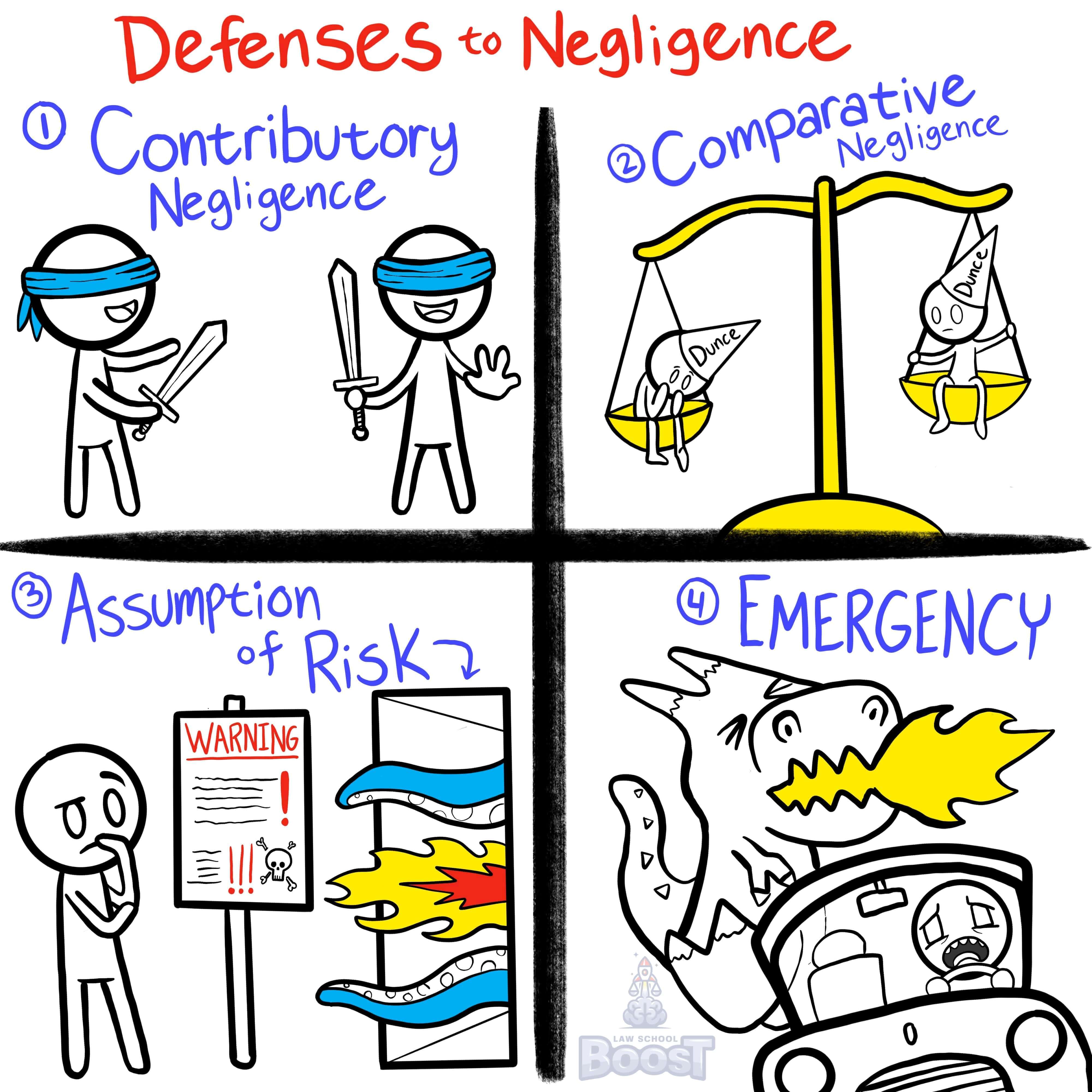👀
Torts • Defenses to Negligence
TORT#055
Legal Definition
The last clear chance rule allows a plaintiff—during their rebuttal to a claim of contributory negligence—to argue that the defendant is liable because they had the last clear chance to avoid an accident, but failed to do so.
Plain English Explanation
"Contributory Negligence" is the legal defense equivalent of, "Yeah, but they were stupid, too!" Imagine Bob negligently pouring oil out on a sidewalk. Later, Sam comes running by while holding scissors and slips on the oil, landing on his collection of now-bloody scissors. Sam would argue that Bob is liable for his injuries because he negligently caused the sidewalk to be slippery. In response, Bob may say, "Sure, I did that -- but Sam is the fool who was running with scissors. Sams negligence contributed to his injuries.
In response, Sam may claim that Bob saw him running towards him and knew the sidewalk was slippery, and that Bob had the last clear chance to warn Sam of the slippery sidewalk, but he did not. In other words, Sam argues that even though he was also negligent, ultimately Bob was in control of avoiding the accident had he acted and, because he did not act, the accident occurred.
In response, Sam may claim that Bob saw him running towards him and knew the sidewalk was slippery, and that Bob had the last clear chance to warn Sam of the slippery sidewalk, but he did not. In other words, Sam argues that even though he was also negligent, ultimately Bob was in control of avoiding the accident had he acted and, because he did not act, the accident occurred.
Visual Aids

Related Concepts
In assessing negligence, what is assumption of risk?
In assessing negligence, what is comparative negligence?
In assessing negligence, what is contributory negligence?
In assessing negligence, what is emergency?
What are the defenses to negligence?
When is contributory negligence of a third party imputed to a plaintiff?


